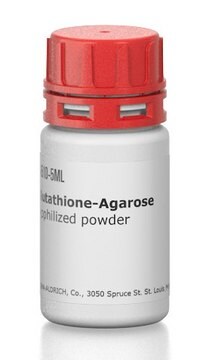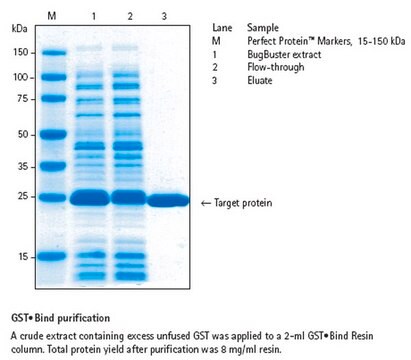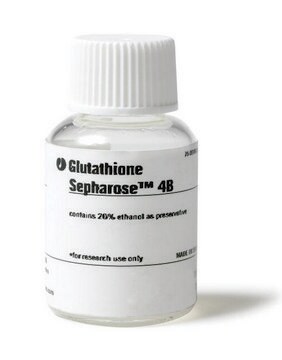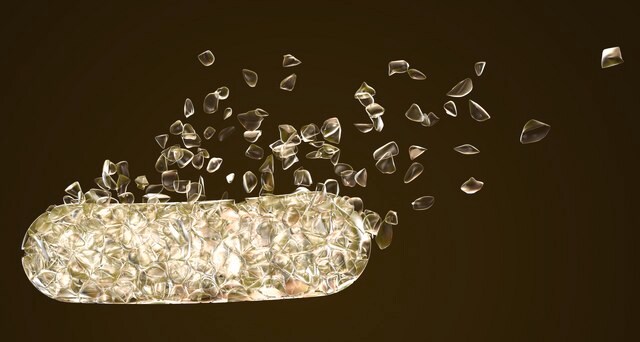Kluczowe dokumenty
E6406
EZview™ Red Glutathione Affinity Gel
About This Item
Polecane produkty
klasy chemiczne analitów
proteins (GST)
Poziom jakości
metody
immunoprecipitation (IP): suitable
protein purification: suitable
temp. przechowywania
2-8°C
Szukasz podobnych produktów? Odwiedź Przewodnik dotyczący porównywania produktów
Opis ogólny
Zastosowanie
Cechy i korzyści
- Increased visibility - Red color reduces risk of incidental aspiration
- Improved recovery of target protein by reduced accidental loss
- Higher reproducibility - More consistent yields
Postać fizyczna
Informacje prawne
Kod klasy składowania
10 - Combustible liquids
Klasa zagrożenia wodnego (WGK)
WGK 3
Wybierz jedną z najnowszych wersji:
Certyfikaty analizy (CoA)
Nie widzisz odpowiedniej wersji?
Jeśli potrzebujesz konkretnej wersji, możesz wyszukać konkretny certyfikat według numeru partii lub serii.
Masz już ten produkt?
Dokumenty związane z niedawno zakupionymi produktami zostały zamieszczone w Bibliotece dokumentów.
Powiązane treści
Pull-down assays, reagents, and protocols for investigating in vitro protein-protein interactions using affinity or GST pull-down, tandem affinity purification (TAP), and co-immunoprecipitation methods.
Badanie interakcji białko-białko in vitro za pomocą testów pull-down, z wykorzystaniem metod powinowactwa, GST pull-down, TAP i koimmunoprecypitacji.
Badanie interakcji białko-białko in vitro za pomocą testów pull-down, z wykorzystaniem metod powinowactwa, GST pull-down, TAP i koimmunoprecypitacji.
Nasz zespół naukowców ma doświadczenie we wszystkich obszarach badań, w tym w naukach przyrodniczych, materiałoznawstwie, syntezie chemicznej, chromatografii, analityce i wielu innych dziedzinach.
Skontaktuj się z zespołem ds. pomocy technicznej








